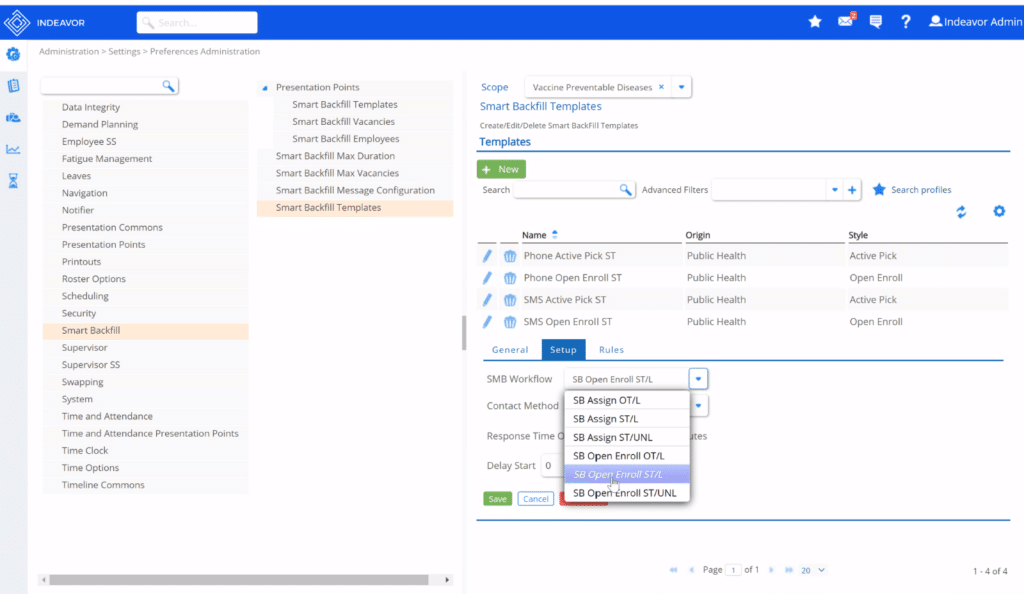Global organizations are struggling with managing rising overhead expenses, and are in search of a way to better manage labor costs.
We know labor cost control has become an important factor in the current economic climate. According to Gartner, cost optimization remains high on the list of priorities for 92% of HR functions, and leaders often respond to ad hoc cost reduction requests, leading to unintended consequences for the business.
In order to take a proactive stance on reducing labor costs, a strong workforce planning and management tool (like Smart Backfill™) can help.
Predictable Work Schedules
According to Northwestern Medicine, humans are creatures of habit and require a strong routine. Providing a predictable routine and schedule for your employees can lead to better stress levels, improved mental health, more time to relax, and less anxiety. People like to know when they will be going to work and when they will be going home. Work predictability can also promote work-life balance.
Employees typically plan the rest of their day around their work schedule. This means if you spend a lot of time changing employee work schedules around, they will have a difficult time planning their personal lives around it.
If there’s a conflict between an employee’s personal life and their professional life, they could call out sick. This situation makes it harder for you to manage the rest of your employees, and fill last-minute vacancies. Make sure that you give your employees a predictable work schedule.
Create an Employee Engagement Strategy
Human Resources and Operations professionals know the cost to recruit, hire, and train a new employee is exponentially higher when compared to retaining an experienced one. Economic factors coupled with the “Great Resignation”, where many employees leave their current jobs in droves, organizations are forced to spend a lot of extra time looking for replacements and backfills, adding to an already strained labor cost situation.
In order for organizations to maintain a competitive edge in their respective industries, they need to work with their human resource department to take steps to convince their employees to stay. How does this tie into productivity? An employee engagement study by Quantum found that engaged employees are 17% more productive than their unengaged colleagues. By creating an employee engagement strategy, not only will you be able to boost productivity, but help reduce overhead expenses.

Reduce Unnecessary Overtime
If your employees have to spend extra hours on the job, especially if you’re understaffed, you’ll be required to pay overtime. While overtime is an excellent means to reward employees who regularly appreciate extra earned income, additional hours can also lead to a decrease in productivity and unnecessary overtime costs to the organization.
According to overtime efficacy studies reviewed by SHRM, “when high levels of overtime begin, marginal productivity slows”. In other words, the total output increases, but the hourly productivity is lower than it was during the first 40 hours. Meaning, that reducing any overtime that can be deemed unnecessary has a direct impact on productivity, which directly affects the organization’s bottom line.
In most industrial environments, overtime management and evaluation are time-consuming responsibilities due to the demand for OT week over week. To save time and better prepare your workforce, it’s best to deploy a tool that automatically sends alerts to you when you’re going to need to schedule an employee for overtime.
Through automation, you will be able to make schedule changes to avoid paying any unnecessary overtime, while also leveraging critical insights such as skills/certifications for OT assignments. Being able to staff better in advance will help avoid any forced overtime, which is costly and can damage employee morale – which we know also carries negative financial implications
Use Incentives for Performance
Another way to reduce labor costs is to incorporate incentives into your pay structure. According to Gartner, a reward and incentive program can increase employee performance by up to 11% on average. This means that you may want to give employees a bonus or commission in accordance with their productivity or attendance record. Boosting productivity = lowering labor costs.
How is this? For example, through an incentivized compensation plan, you could be able to reduce the number of times you’re employees could call out sick. If your employees know they have the ability to make extra money, and if they hit certain productivity and attendance targets, the more inclined they will be to show up, work hard, and meet deadlines.
However, this requires transparency between the organization and employees. Organizations will need to be open, honest, and transparent with different performance metrics that lead to bonuses. Set expectations and encourage your workforce based on these. Incorporating an employee incentive structure can significantly increase employee morale, which can reduce employee turnover levels and increase retention.

Smart Backfill™
That is exactly where Indeavor’s Smart Backfill™ tool helps. It allows front-line management to automatically fill vacancies and provides real-time schedule updates to shift workers in the palm of their hand through an easy app on your phone. With Smart Backfill, organizations no longer have to spend time scrambling last minute to fill shifts manually and can reduce the amount of time you’re short-staffed.
Benefits of lndeavor include:
- The ability to automatically schedule qualified employees based on specific staffing standards, ensuring the right number of qualified employees at work every day.
- Ensure scheduling fairness by automating your call process. You don’t have to worry about your employees getting angry, as there’s always a paper trail available.
- Eliminate excess labor costs from understaffed shifts. You don’t have to worry about spending as much money on overtime pay. Plus, you can reduce you’re the risk of injury and regulatory fines and sanctions.
Ultimately, if you can reduce the amount of time spent moving employees around, you can increase transparency, reduce overhead expenses, and increase productivity.







